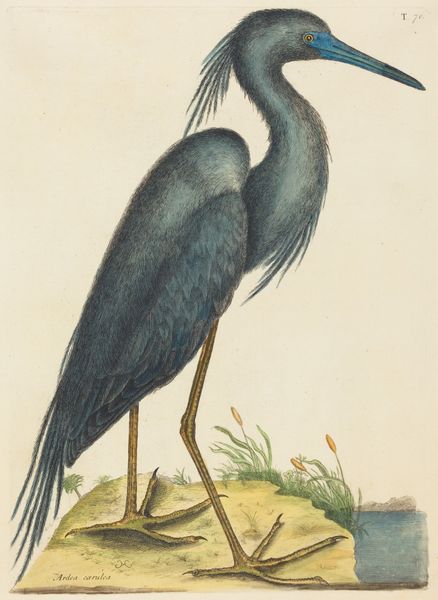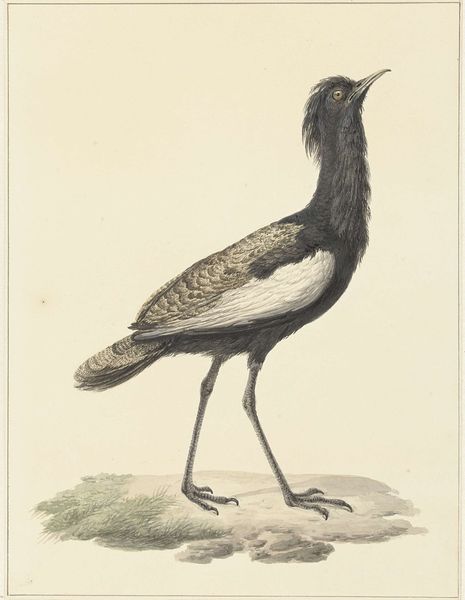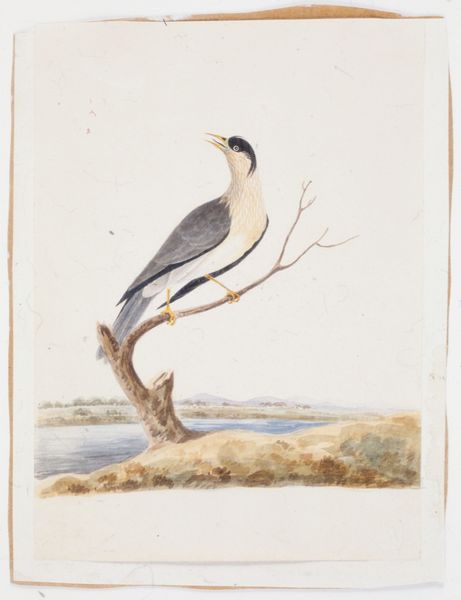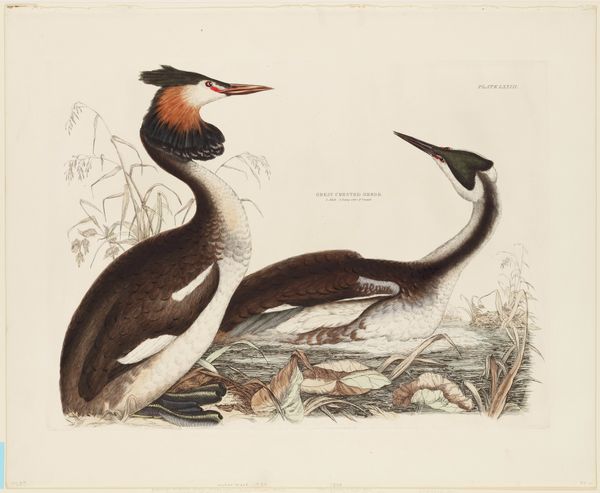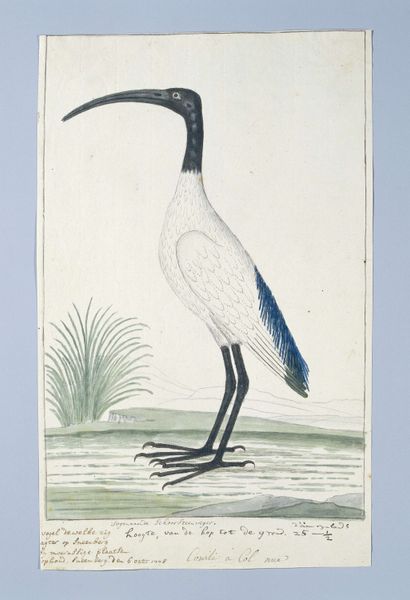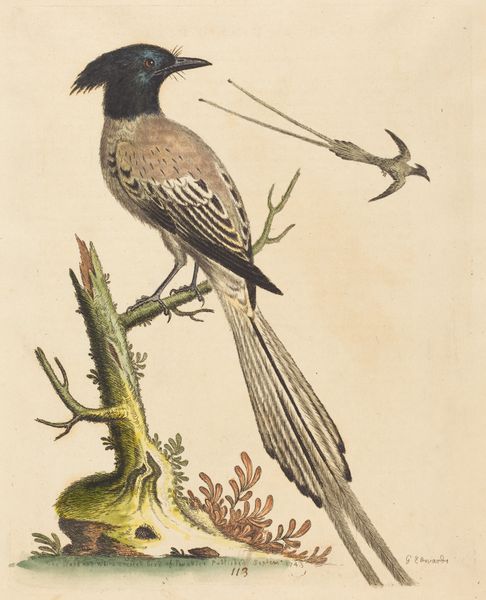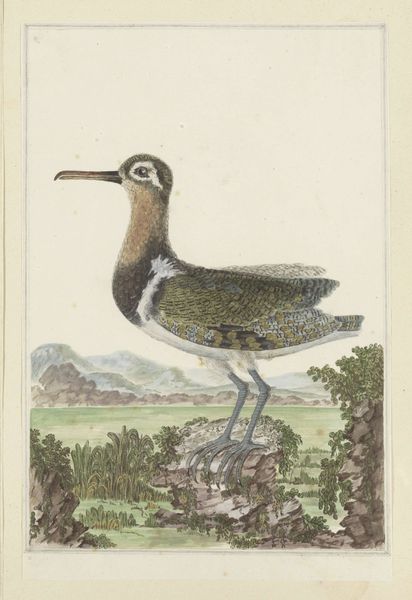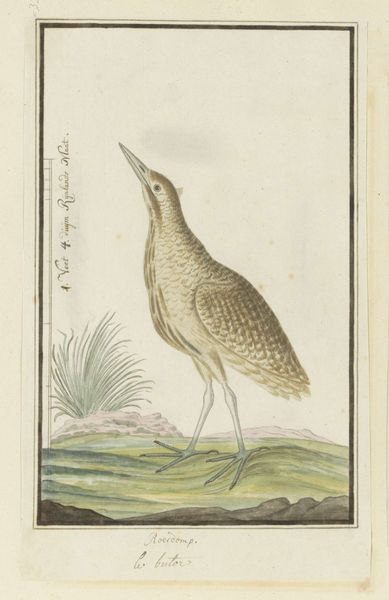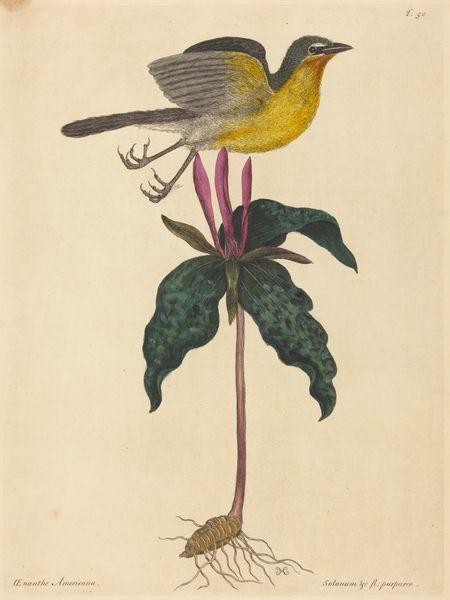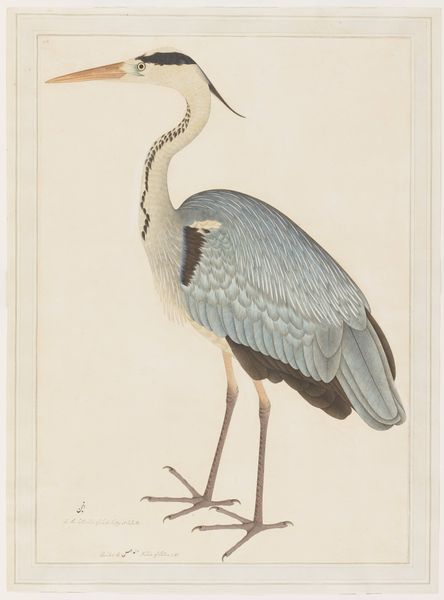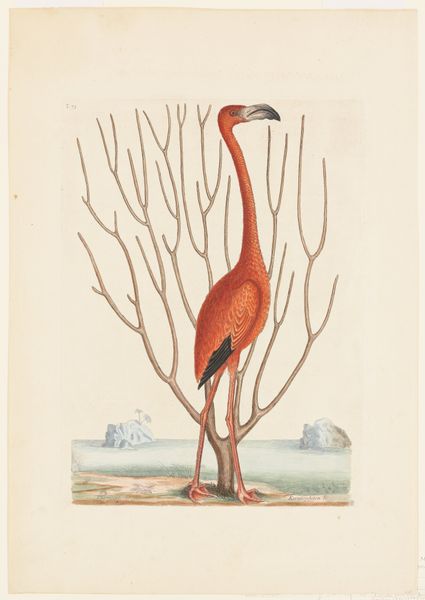
Dimensions: 14 x 10 3/8 in. (35.56 x 26.35 cm) (sheet)
Copyright: Public Domain
Editor: So, this is "The Large Lark," a hand-colored etching by Mark Catesby, created sometime between 1731 and 1743. I’m immediately struck by how detailed and almost clinical it is. It feels like a very precise observation. How do you read this piece, particularly in terms of its historical context? Curator: Precisely. We need to consider the power dynamics at play during Catesby's time. Scientific illustrations, while seemingly objective, were often used to document and categorize the natural world for colonial powers. What might appear as simple botanical art also functioned as a tool for claiming and exploiting resources in colonized lands. Think about the gaze: who is really being observed, and for what purpose? Editor: That's fascinating; I hadn't considered it that way. The bird, presented so meticulously, becomes a symbol within a larger system. Does the choice of the Lark itself have any particular significance, or is it more about the act of documentation? Curator: The lark, in European culture, often symbolizes dawn, awakening, even freedom. But within the context of colonialism, that symbolism is twisted. Its depiction here, in the ‘New World,’ contributes to a narrative of dominion—of naming and claiming what's seen as wild or untamed. It reinforces the idea of a European perspective imposing itself on a foreign landscape. Have you noticed anything in the imagery that further emphasizes these elements of domination? Editor: I do see how the plant, also depicted so methodically, complements the overall composition; but is perhaps not naturally co-existing. Thanks, your perspectives give me new eyes to view historical artwork! Curator: It also informs our current ecological understanding of these species through migration and habitat integration.
Comments
No comments
Be the first to comment and join the conversation on the ultimate creative platform.
